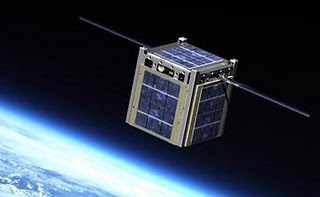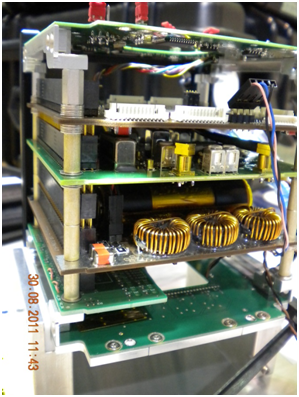NanoSatC-Br 1


NanoSatC-Br 1 is a Brazilian CubeSat project managed by NPE (Instituto de Pesquisas Espaciais) South Regional Center. The small 1.3kg 1U CubeSat is equipped with a scientific payload but is also set fro a technology demonstration mission.
The satellite uses the standard CubeSat features – body-mounted solar panels, Li-Ion batteries, a basic attitude determination and control system and processor cards to control all spacecraft functions. Communications are accomplished in the UHF/VHF bands for telemetry and command exchange while an S-Band systems is used for payload data downlink to ground stations at INPE and São José dos Campos.
The satellite is equipped with a Fluxgate Magnetometer Payload to measure the intensity of Earth’s magnetic field over the South Atlantic Anomaly and the Equatorial Electrojet. The magnetometer records several data points per second collecting three-axis magnetometer data at an intensity resolution of 15 Nanotesla.
The hall sensor can support a magnetic field range of 63mT. Overall, the sensor is 8.9 by 8.9 by 3.2 millimeters in size sampling at 5kHz. The second payload is a particle precipitation dosimeter to measure the radiation environment in Low Earth Orbit as a function of magnetic field strength.
The South Atlantic Anomaly is of particular interest because of a decreased shielding of Earth’s magnetic field causing high proton fluxes which can lead to radiation related upsets in satellites and is also of importance to air traffic. The Equatorial Electrojet is a flow in Earth’s ionosphere to the east near the equator. The EEJ causes daily variations in magnetic field strength and has been the subject of several space missions.
In addition to the science payloads, the satellite is equipped with a Field Programmable Gate Array and Integrated Circuitboard for testing in the radiation environment found in Low Earth Orbit. These components will be monitored over time to identify any deficiencies that may be caused by radiation.
